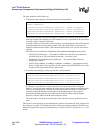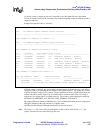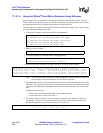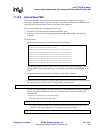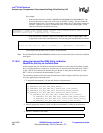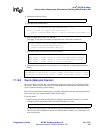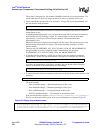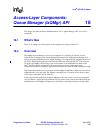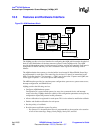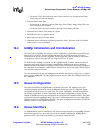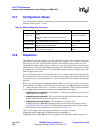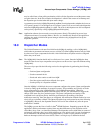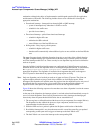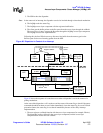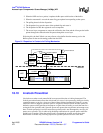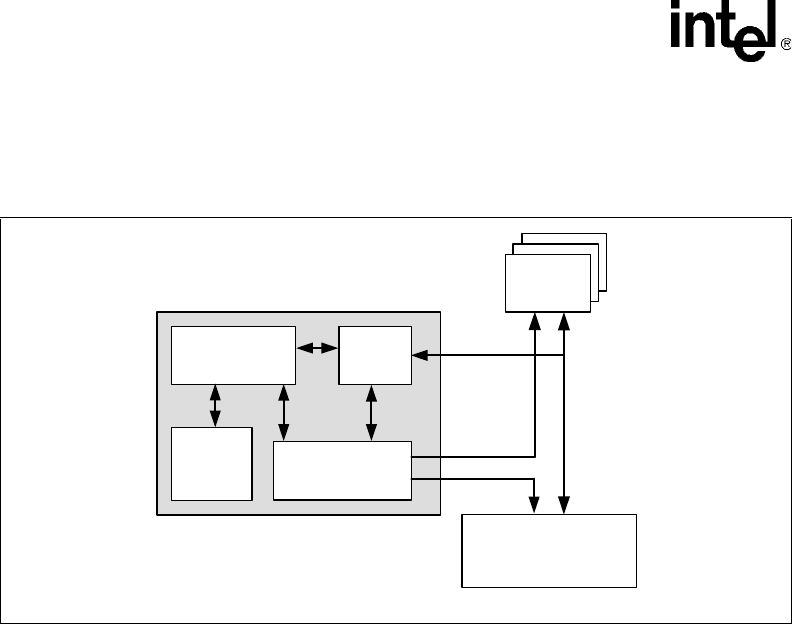
Intel
®
IXP400 Software
Access-Layer Components: Queue Manager (IxQMgr) API
April 2005 IXP400 Software Version 2.0 Programmer’s Guide
266 Document Number: 252539, Revision: 007
18.3 Features and Hardware Interface
The IxQMgr provides a low-level interface for configuring the AQM, which contains the physical
block of static RAM where all the data structures (queues) for the IxQMgr reside. The AQM
provides 64 independent queues in which messages, pointers, and data are contained. Each queue is
configurable for buffer and entry size and is allocated a status register for indicating relative
fullness.
The AQM maintains these queues as circular buffers in an internal, 8-Kbyte SRAM. Status flags
are implemented for each queue. The status flags for the lower 32 queues are transmitted to the
NPEs via the flag data bus. Two interrupts — (QM1) one for the lower 32 queues and (QM2) one
for the upper 32 queues — are used as queue status interrupts.
The AHB interface provides for complete queue configuration, queue access, queue status access,
interrupt configuration, and SRAM access.
IxQMgr provides the following services:
• Configures AQM hardware queues.
Configuration of a queue includes queue size, entry size, watermark levels, and interrupt-
source-select flag. IxQMgr checks the validity of the configuration parameters and rejects any
configuration request that presents invalid parameters.
• Allows callbacks to be registered for each queue. This is also referred as notification callback.
• Enables and disables notifications for each queue.
• Sets the priority of a callback.
• Provides queue-notification source-flag select.
— For queues 0-31, the notification source is programmable as the assertion or de-assertion
of one of four status flags: Empty, Nearly Empty, Nearly Full, and Full.
Figure 89. AQM Hardware Block
NPE
AHB
Flag Bus
AHB Queue Manager
Queue
Buffer
SRAM
Queue
Control
AHB
Slave
Config/Status
Registers
Int
Intel XScale® Core
B2415-02



